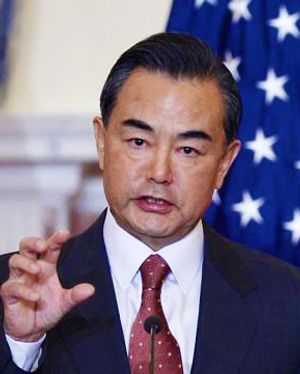In the first major diplomatic interaction between India and China since the Bharatiya Janata Party and Narendra Modi rose to power, Chinese foreign minister Wang Yi traveled to New Delhi to meet Indian foreign minister Sushma Swaraj. The two-day visit involved a broad strategic dialogue addressing the gamut of bilateral issues between India and China, but focusing mostly on economic matters and trade. According to Xinhua, “Wang [was] on a two-day visit to India as President Xi Jinping’s special envoy.”
The visit was notably warm, with positive rhetoric from both sides. Wang repeatedly praised Narendra Modi’s election victory, referring to him as an “old friend” of China. Wang was likely alluding to Modi’s interactions with the Chinese government as Chief Minister of Gujarat. Wang further commented that the rise of the National Democratic Alliance (NDA) government and Modi in India has injected a “new vitality into an ancient civilization,” expressing optimism that India would thrive under Modi’s leadership. Wang met with Swaraj on Sunday for a three-hour meeting which was described as “cordial, useful, substantive and productive” by the Indian side. On Monday, Wang met with Narendra Modi although scant details are available as to what the two discussed. Modi has highlighted China as an important partner for India. Despite his apparent enthusiasm for closer relations with China, during his campaign for prime minister, he took the opportunity in India’s northeast to condemn China’s “expansionist” behavior.
In New Delhi, Wang said closer ties between India and China would “contribute to the national resurrection” of both countries — hearkening back to the sort of rhetoric used by Indian and Chinese leaders in the 1950s, referring to their solidarity against Western imperialism and colonialism. Meanwhile, Xinhua, China’s state-run news agency, ran a commentary arguing that China and India are in reality strategic partners, not rivals. Following Wang’s visit to India, Indian President Pranab Mukherjee, in a speech before India’s parliament, stated that India would continue to pursue its strategic partnership with China as well. Xinhua took note of the fact that Mukherjee made a point of stating China before any other state in his speech, including Japan, Russia, and the United States. According to Times of India, Chinese premier Li Keqiang was the first foreign leader to call Modi after he assumed office.
During his 45-minute meeting with Modi, Wang conveyed a direct message from Xi Jinping:
Under your leadership, India will achieve greater development and progress. India and China are partners in long term strategic cooperation. Therefore, let’s work together to achieve peaceful cooperation and inclusive development for the benefit of our two people and in the interest of peace, stability and prosperity in Asia and in the world.
Xi is expected to visit India in the fall.
Rhetoric aside, the greater significance of Wang’s visit is that it reflects a desire in China to pivot the bilateral relationship with India away from tenuous and unproductive disputes and toward economic cooperation. China, and now India under Modi, see economic complementarities to be exploited for mutual gain. At the meeting between Wang and Swaraj, the two sides agreed to expand “pragmatic cooperation” (especially economic cooperation) at the intersection of China’s “march West” and India’s “Look Eastward” policies.
Modi’s top foreign policy objective seems to be gearing India’s foreign relations towards powering its economic growth. Accomplishing that objective with anything less than a positive relationship with China will be significantly challenging. Modi’s government has not yet addressed contentious economic issues between India and China such as India’s significant trade deficit with China.
Despite rhetoric on both sides favoring closer ties, India and China continue to have their share of problems. While Wang’s trip might by the first official interaction between the Chinese government and the Modi administration, the Chinese foreign ministry did protest Tibetan leader Lobgsang Sangay’s prominent place at Modi’s swearing-in ceremony on May 26. Meanwhile, one Indian newspaper reports that a classified Indian Intelligence Bureau report shows a build-up of Chinese forces in Pakistani Kashmir. For India, which is still reeling from the loss suffered in 1962 against China in many ways, entirely divorcing strategic economic cooperation from its perception of China as a major threat on its borders is unfeasible. India and China share two major territorial disputes along their Himalayan border — one, Aksai Chin, is currently administered by Beijing and the other, Arunachal Pradesh, is administered by New Delhi.

































